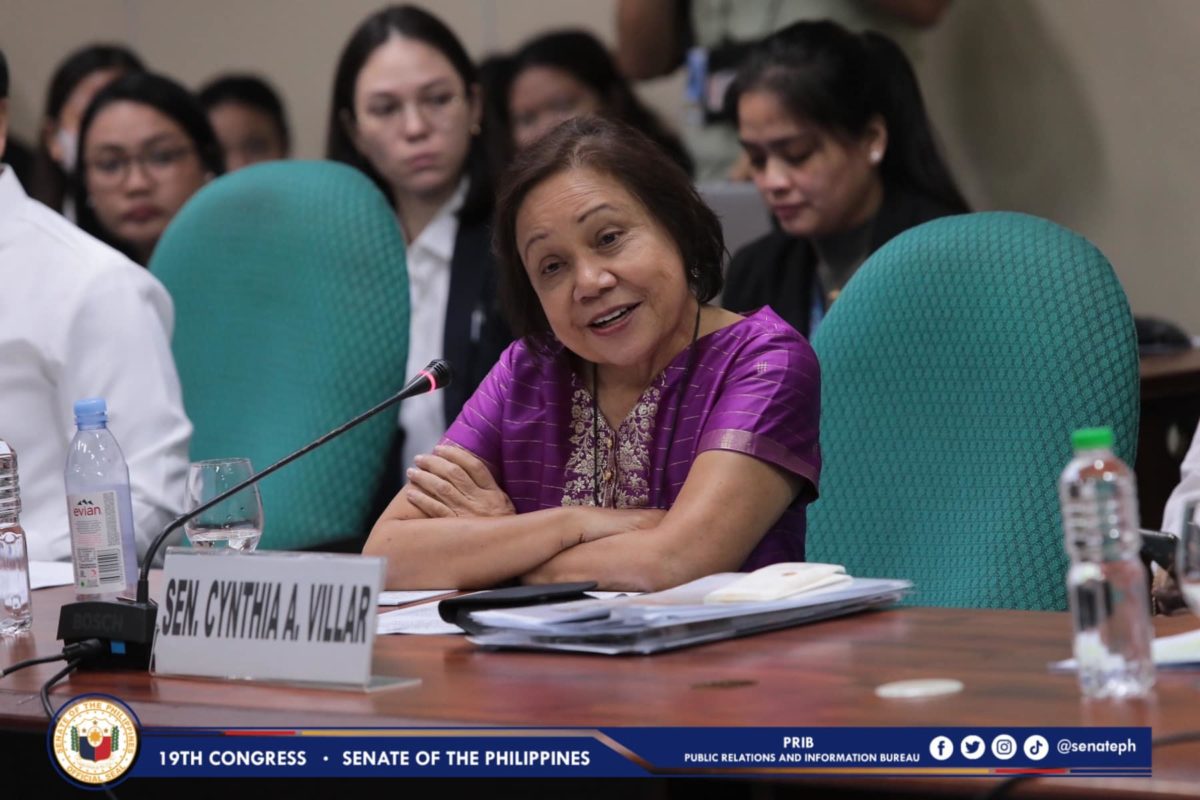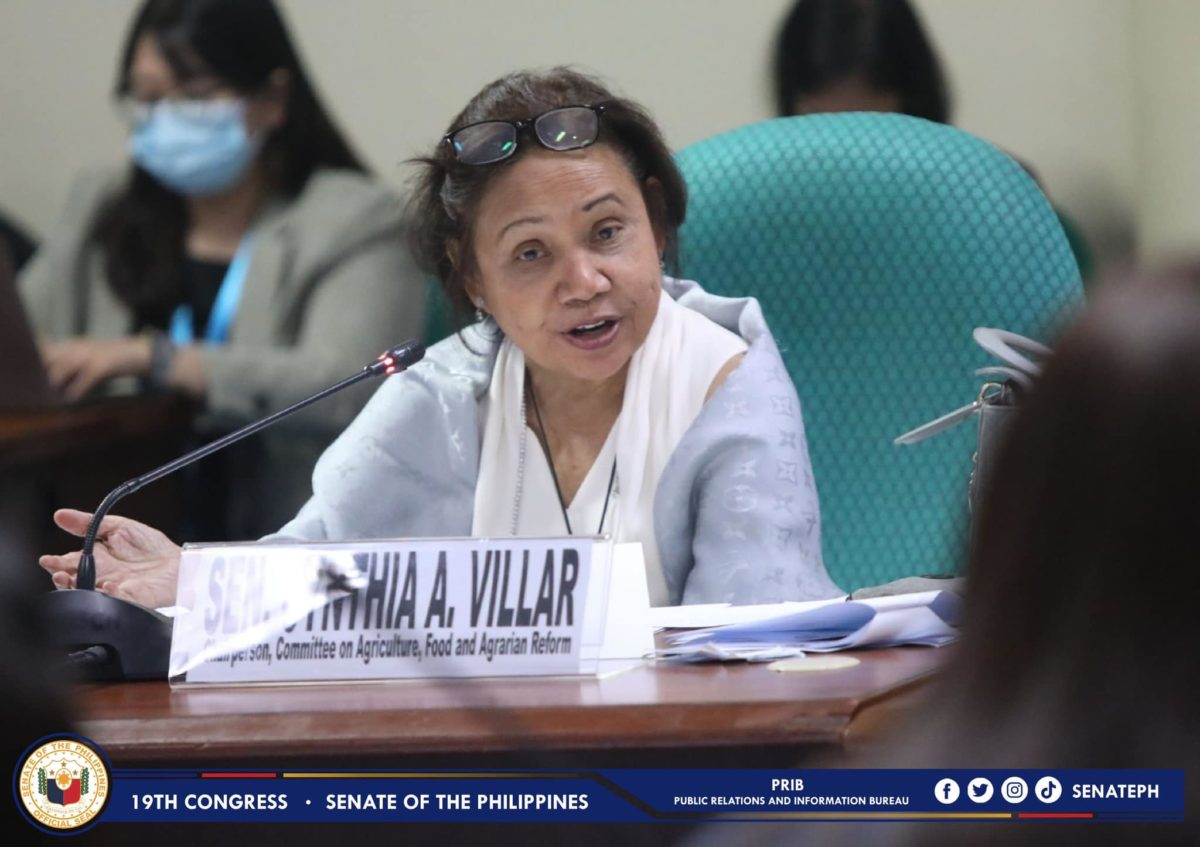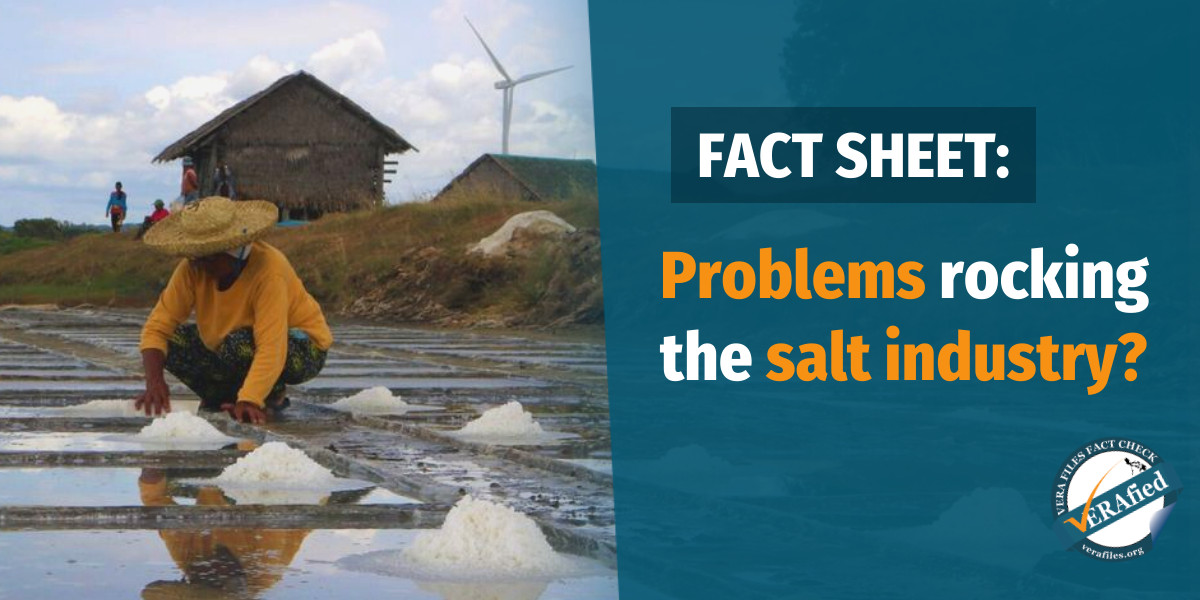A post on Sen. Cynthia Villar’s official Facebook page claimed that prices of rice in the country are no longer increasing since the Rice Tariffication Law (RTL) was enacted in 2019. This is false.
STATEMENT
On July 31, Villar’s Facebook page posted a 31-second photo reel of Agricultural and Biosystems Engineering students who completed their internship at the Philippine Center for Postharvest Development and Mechanization. It was captioned:
“Simula [na]ng maipasa ang Rice Tarrification (sic) Law, batas na akda ng ating Senadora Cynthia A. Villar, naging mechanized na ang rice farming sa bansa. Ang hindi pagmamano mano ng tanim at ani ay naging mas mabilis ang produksyon at mas madami ang output ng ating rice farmers. At dahil sa batas na ito, hindi na tumaas ang presyo ng bigas sa bansa. Kaya’t patuloy ang pamimigay ng agricultural machineries pati na ang training ng pag gamit nito.”
(Since the enactment of the Rice Tariffication Law, authored by Sen. Cynthia A. Villar, rice farming in the country has been mechanized. The mechanization of planting and harvesting resulted in faster production, and more output for our rice farmers. Because of this law, the price of rice in the country has not gone up. That’s why we continue to distribute agricultural machinery and conduct training on how to use it.)
Source: Sen. Cynthia A. Villar official Facebook Page, Simula ng maipasa… (archived), July 31, 2023
FACT
Since the RTL was enacted in March 2019, local rice prices have actually gone up. For example, the prevailing price of regular-milled rice in March 2019 was at P39. While this went down to P35 in December that same year, it increased to P38 by the second half of 2020 until the end of 2022, according to the Department of Agriculture’s (DA) Price Monitoring database. By August this year, the average price of regular-milled rice reached P40.50 per kilo.
The price of another rice type, such as well-milled rice, was at P40 pesos per kilo in 2019. The DA’s Price Monitoring database showed that its prevailing price reached P44 by late 2020 and in July 2021. Its average price, by August 2023, had gone up to P45 per kilo, according to the same database.
The Philippines saw an increase in the level of rice farming mechanization, which went up to 2.68 horsepower per hectare (hp/ha) in 2022, from 2.31 hp/ha in 2013, according to a PHilMech report.
However, PHilMech Director Dionisio Alvindia said that the P30-billion worth of farm machinery set for distribution under the RTL’s Rice Competitiveness Enhancement Fund (RCEF) Mechanization Program is enough for only 14% of the total 2.7 million hectares of rice farmlands in the country.
The program is set to run until 2024.
“If you ask me, that 14% of intervention distributed to farmers, that’s not going to make much of an impact. For this, in my honest opinion, I would like RCEF to be extended so the farmers who have not yet received a machine would be given their own, in the future,” said Alvindia in a mix of English and Filipino during a press conference in May.
BACKSTORY
Villar was the sponsor and one of the co-authors of the RTL, which then-president Rodrigo Duterte signed into law on Feb. 14, 2019.
The RTL removed the cap on imported rice in the country and instead imposed a tax or tariff. The government imposed a 35% tariff on all rice imports from ASEAN countries and 40% on non-ASEAN rice imports, if within 350,000 metric tons of minimum access volume.
The collected tariffs on rice imports go to the RCEF to support local farmers’ rice production, whether through credit, extension services, buying farm equipment and seed development.
Villar, chair of the Senate Committee on Agriculture and Food in the 17th Congress, noted in her sponsorship speech of the RTL that while tariffication seeks to address rice price-related issues in the country, it “may affect the income of Filipino farmers.”’
As a result, farmers of dry palay lost around P12,800 per hectare, according to a 2019 study on the impact of RTL on farmers’ income published by the DA’s Philippine Rice Research Institute. This means rice farmers lose P3.24 per kilo on the sale of dry palay.
Have you seen any dubious claims, photos, memes, or online posts that you want us to verify? Fill out this reader request form or send it to VERA, the truth bot on Viber.
Sources
Department of Agriculture, Price Monitoring Database, accessed Aug. 2, 2023
PHilMech, PH mechanization level increases to 2.679hp/ha—PHilMech, June 16, 2023
Department of Agriculture, Rice Competitiveness Enhancement Fund, accessed Aug. 13, 2023
Senate of the Philippines, Senate Bill No. 1998 – Legislative History, Sept. 11, 2018
Official Gazette of the Philippines, Republic Act No. 11203, Feb. 14, 2019
PhilRice, Rice Tariffication Law FAQs, September 2019
Department of Finance, Rice tariffication law plows in P46.6-B to farm sector over 2019-2021 period, May 20, 2022
Inquirer.net, PH rice farm mechanization remains slow, June 19, 2023
Business World, Farm equipment maker bats for RCEF extension, says goals unmet, May 24, 2023
PHilMech, #PHILMECHat45 | Press Conference and On-air/On-line Broadcast, May 24, 2023
Senate of the Philippines, Sponsorship Speech of Senator Cynthia Villar, Sept. 17, 2018
PhilRice, How to Make Farmers Winners Under the Rice Tariffication Regime, 2019
(Guided by the code of principles of the International Fact-Checking Network at Poynter, VERA Files tracks the false claims, flip-flops, misleading statements of public officials and figures, and debunks them with factual evidence. Find out more about this initiative and our methodology.)




